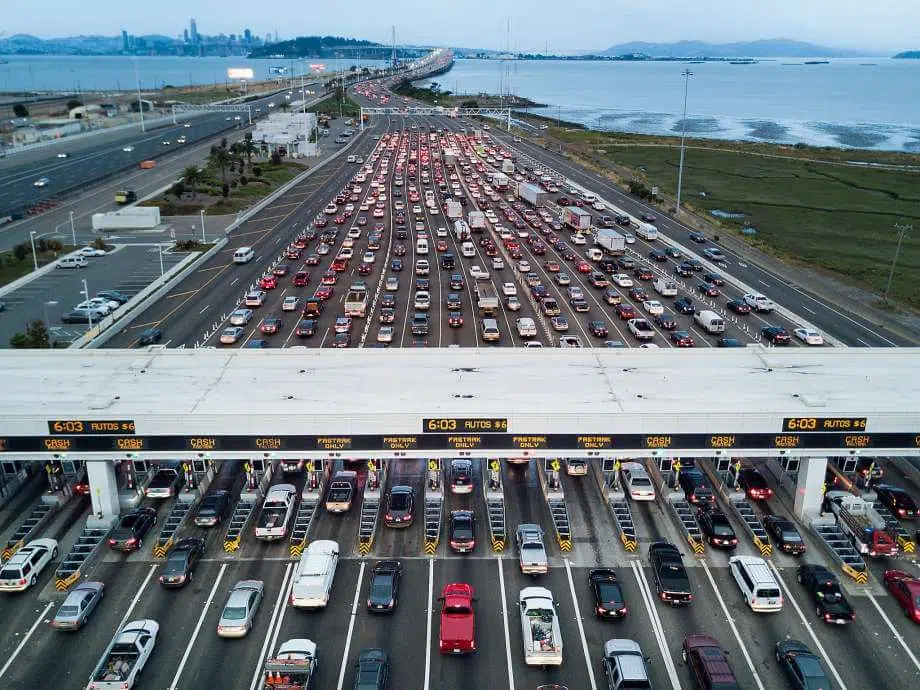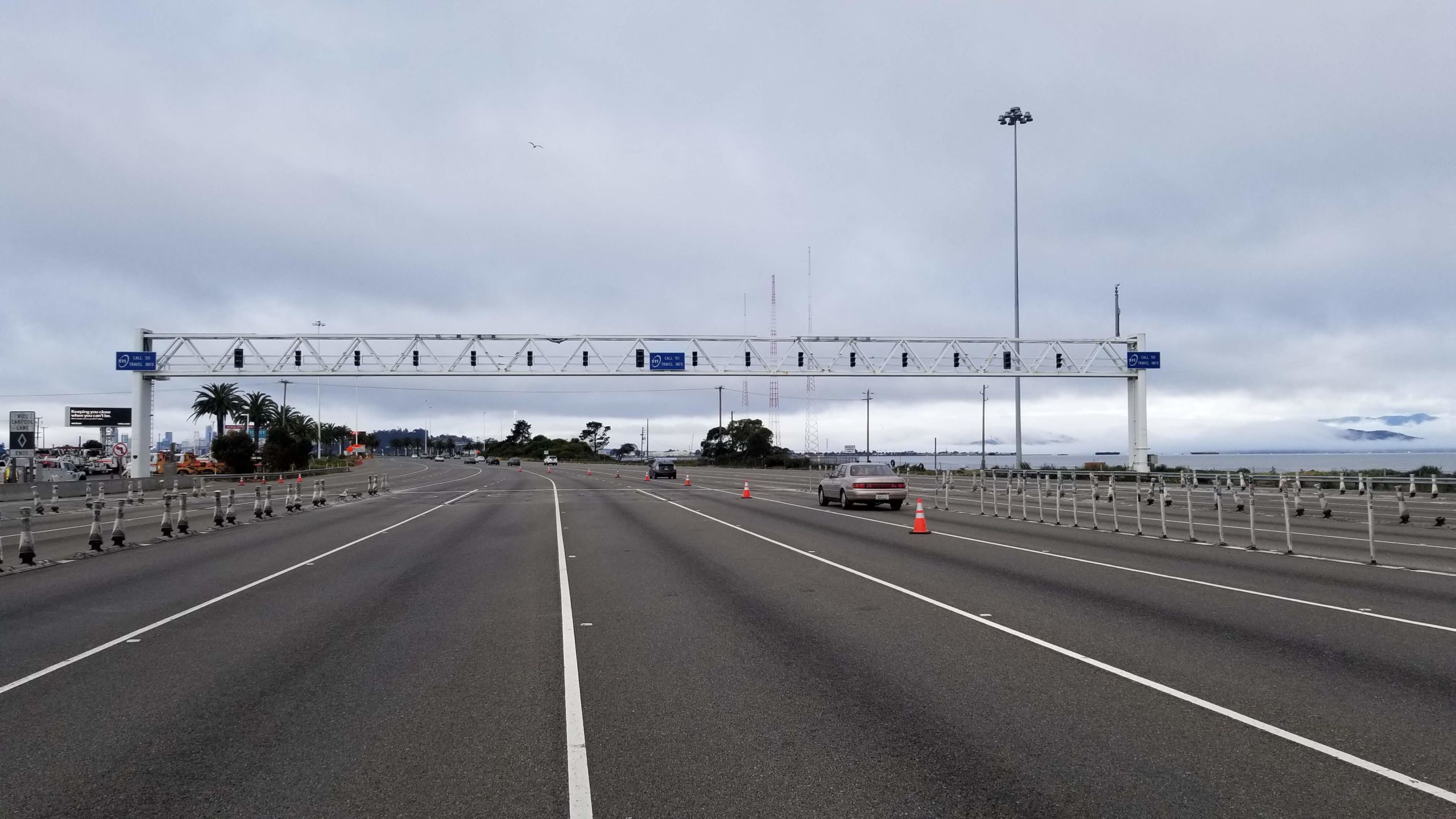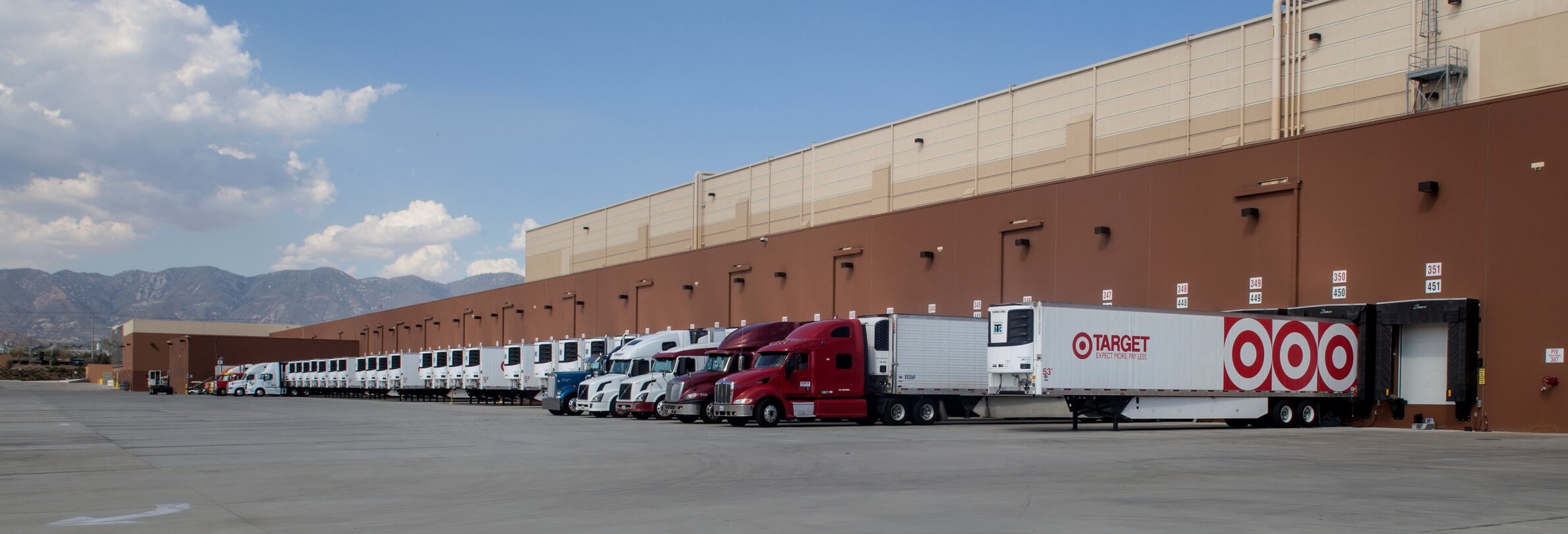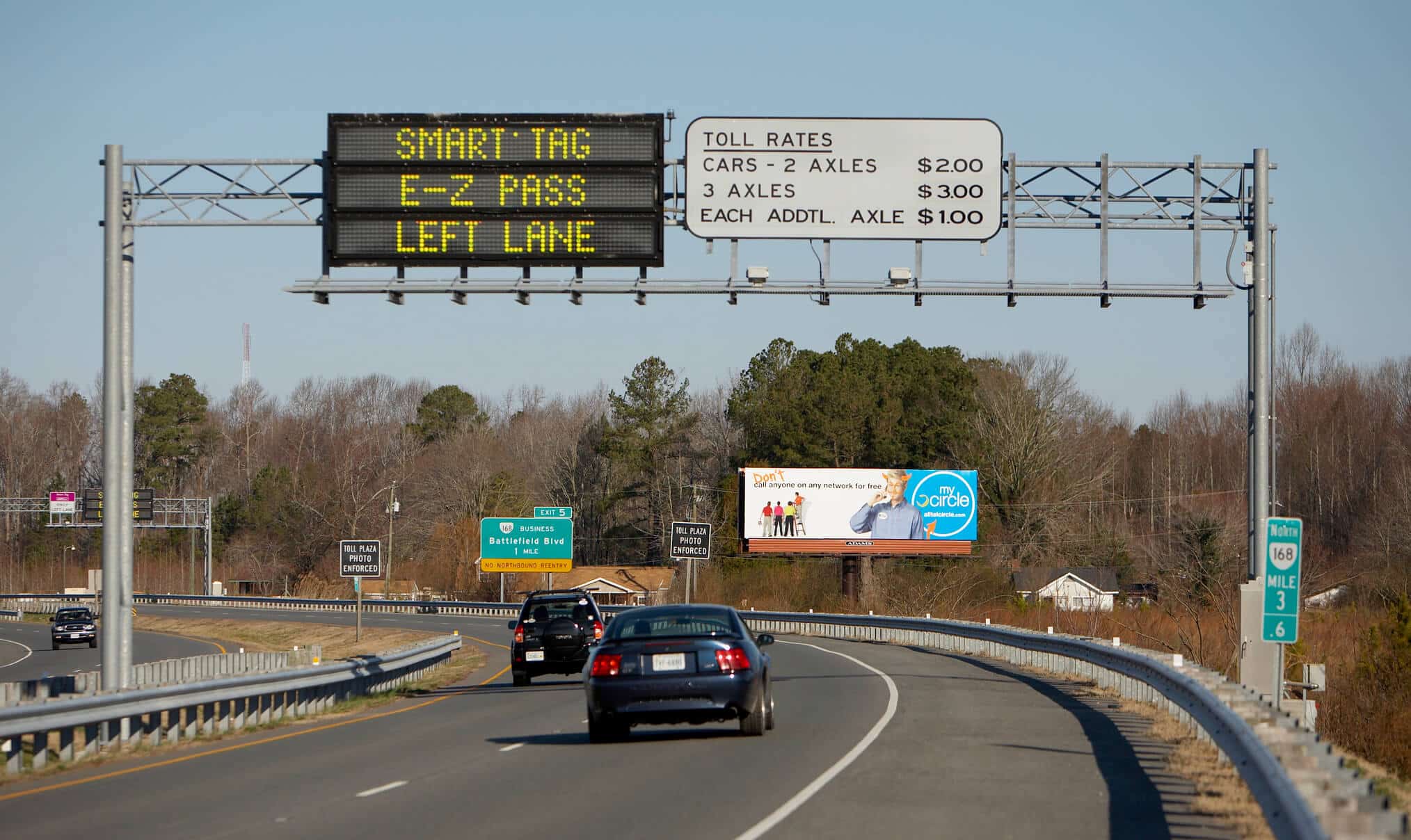- July 30, 2020
- COVID-19, Perspectives
Leading Through Turbulent Times: How the Tolling Industry is Tackling COVID-19


Chadi Chazbek, PE
Roadway Engineer
Increased Telecommuting: Impacts on Tolling and Traffic Pattern Predictions
Beyond destination travel, it is yet to be determined whether traffic will be better or worse than prior rush hour peaks across U.S. freeways. With heightened awareness around public health and social distancing, there has been a decline in public transit ridership and casual carpool programs for commuting, leaving solo driving as one of the few remaining options. This could lead to freeway traffic becoming worse, according to a Vanderbilt University study.
Additionally, telecommuting has allowed companies to develop processes, increase IT capabilities, and identify staff roles and responsibilities that can be performed proficiently from home on an ongoing basis. Leading technology companies, including Google, Facebook, and X, have seen significant success from employees and executives working remotely. An overwhelming reduction in corporate travelers could mean a reduction in freeway traffic, which will make it more difficult to predict daily travel demand as employees shift between telecommuting and office work.
"An overwhelming reduction in corporate travelers could mean a reduction in freeway traffic, which will make it more difficult to predict daily travel demand as employees shift between telecommuting and office work."
Chadi Chazbek, PE
On a larger scale, telecommuting in dense cities like New York (which was an epicenter of the pandemic early on) has caused a house-hunting spike in suburbia and lower cost centers. “During the first month of the pandemic, interest in rural areas skyrocketed while interest in cities fell, with many urbanites dreaming of packing up and heading for the hills,” reports Redfin lead economist Taylor Marr. It is yet to be known if we will see a mass exodus from dense cities to more spread-out and affordable suburban areas, permanently reducing travel demand on congested freeways in metro centers.

Short-Term and Long-Term Challenges Facing the Tolling Industry
How will the tolling industry respond to post-COVID-19 work environments while maintaining social distancing protocols and mitigating risks associated with the pandemic? As the restrictions ease, the tolling industry will have to tackle both the immediate short-term challenges and the more challenging long-term issues.
Short-Term: Financial Loss and Health Risks
In the short term, industry leaders need to continue efforts to minimize direct interaction to ensure the safety of employees and the public. Tolling industry professionals met this challenge head on by countering the need for face-to-face operations at the onset of the pandemic. If you’ve taken a drive through a toll booth in the last 90 days, perhaps you’ve noticed that some no longer have cash collectors, instead informing drivers to expect a bill by mail or encouraging the purchase of a transponder to pay toll costs electronically.
COVID-19 led to a major decline in sales revenue for the tolling industry as daily travel was restricted to frontline workers and those heading to essential businesses. Across the U.S., most tolling agencies have reported a 50% to 90% reduction in tolled trips. While the industry is operating under a collective financial loss, a top priority continues to be protecting workers and drivers. Agencies that still allow cash payment will need to either begin planning or advancing current projects to convert to open road tolling or all electronic toll collection. Due to the urgency of this issue and the associated health risks of cash collection, the tolling industry will need financial support from the federal government to cover current operating costs and fund these key projects.
"Across the U.S., most tolling agencies have reported a 50% to 90% reduction in tolled trips due to COVID-19."
Chadi Chazbek, PE
Long-Term: Pandemic Accelerates Shifting Trends
While it may take a few years for traffic patterns to stabilize and new travel demands on our freeways to be established, some may argue that the pandemic has only accelerated trends and behaviors that were already in place, including the dependence on technology for remote collaboration; the decline in brick-and-mortar retail due to increased reliance on home delivery of goods and services; and the exodus of residents and businesses from high-priced real estate regions to more affordable regions. These expedited trends are anticipated to continue in a post-pandemic world, presenting both demands and opportunities to which the tolling industry should respond.
Potential Changes in Land Use
If leading corporations permit employees to continue working remotely, there may be long-term implications for state departments of transportation and toll agencies. Several articles in recent weeks have predicted “the death of the office” creating uncertainty about how cities will look in a few years. In a post-pandemic era, would the smaller office footprint that several companies are predicting cause cities to contemplate replacing office parks with housing, particularly in areas where there is a significant housing shortage? And would that increase in housing start to bring a bit more balance to the job/housing distribution in urban mega-regions? Will this mean a reduction in long-distance commute patterns? Due to these unknowns, transportation agencies may consider hitting the pause button on constructing further expansions of existing freeways. Instead, they could work to manage existing infrastructure through congestion pricing and integrated corridor management strategies until new land use patterns have emerged.
Changes in Vehicle Type and Increased Maintenance Costs
Retail shopping trips have decreased in frequency as the public increasingly opts for online shopping and home delivery. Assuming a similar pattern persists post-COVID-19, personal shopping trips will be replaced by delivery trips as the distribution and logistics industry attempts to meet the demand of the online economy. This pivot is generating more trips by trucks of all sizes.
With a potential increase in truck traffic causing additional damage to roadway pavement, the cost to maintain these roadways will increase, escalating the need for additional funding. Some of the usual revenue gained through congestion priced corridors will need to be diverted to cover this surge in facility and roadway maintenance costs.

Opportunities for the Tolling Industry
Investment in Real-Time Traffic Management
The tolling industry will need to be flexible and actively manage traffic on a real-time basis in the months ahead. Investment in congestion pricing technology allows toll agencies to manage traffic on a corridor by influencing demand and behavior through pricing—providing more reliable trip times and increased throughput. Without this pricing capability, traffic demand can only be influenced by a limited number of tools such as ramp metering and specific hours of HOV operations. Flexibility becomes particularly important if daily travel patterns become even more unpredictable when workers’ commute schedules shift on different days due to the pandemic. Congestion pricing allows for managing the travel demand in real time and can be based on each day’s traffic volumes.
Increased Traffic Efficiency with All-Electronic Processes
The closure of express lane tolls and removal of toll staff at the booths were widespread modifications made by toll operators at the onset of COVID-19 to increase both safety and traffic efficiency. This move eliminated the need for stoppage and cash exchange at the booths, allowing travelers to cruise through toll gantries safely.
The Rhode Island Turnpike and Bridge Authority (RITBA) is expanding upon these continuing efficiency efforts in response to COVID-19 by announcing the addition of two open road tolling lanes (ORT) at the Newport Pell Bridge toll plaza. Similarly, Bay Area Toll Authority (BATA) in the San Francisco region may decide to permanently remove all cash tolls and live toll operators on Bay Area state-owned bridges. Though this plan to remove toll plazas at bridges and implement all-electronic processes was slated to take effect in a few years, the pandemic accelerated this plan by removing toll takers out of the booths to flatten the curve. BATA plans to move this plan along at a faster rate across all seven Bay Area bridges.

Partnerships Are Key to Navigating the Path Forward
As the tolling industry works to protect its workers and the public at large, both the short-term and long-term challenges will need full consideration to mitigate negative impacts. The American way of life has changed inextricably—possibly permanently—and while we hope to return to some sense of normalcy, no industry can predict exactly what that will look like.
As we all change how we interact and enjoy travel modalities, toll bridge operations have an opportunity to lead the shift—re-envisioning the roles of cities, transportation systems, and businesses. Leadership will have to revise existing plans and policies to effectively manage and operate existing systems and efficiently deliver new systems. As the tolling industry learns more about how the public has adapted to the new path forward, toll agencies, cities, regional MPOs, area businesses, and local advocacy groups will need to work together to shape our future for years to come.
About the Author

Chadi Chazbek, PE
Chadi is a seasoned project manager specializing in delivering large roadway projects, including highway interchanges, through the Caltrans process. His strategic and innovative thinking, coupled with his working relationship with Caltrans District 4 and HQ staff, has manifested in some ground-breaking managed lanes projects that he has implemented in the State of California. He has led the implementation of the first express lane in the Bay Area, I-680 Southbound Express Lanes in Sunol, the first continuous access express lane on I-580 in the tri-valley, and the first shoulder running lane project on I-580 Richmond-San Rafael Project. Chadi is also a member of the Transportation Research Board Managed Lanes Committee.
